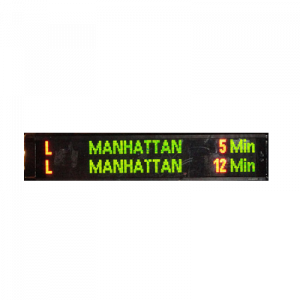For many prospective MBA students, finances have the biggest impact on their decision to study. Nearly half of candidates surveyed by the Graduate Management Admission Council, an exam administrator, did not have enough money to pay for their MBA, while 47 percent said hefty debt would prevent them from attending business school.
MBA aspirants are under greater pressure to secure funding because tuition fees have risen faster than inflation for the past several years at many institutions. This has coincided with an increase in scholarship awards, but the amounts rarely cover the full cost of attendance, forcing students to find innovative ways to pay for an MBA.
A dozen US business schools now charge upwards of $200,000 for their full-time MBA programs, an increase from four institutions in 2016. Only 38 percent of prospective MBA students thought they could pay the full fees this year, according to a survey by education consultancy CarringtonCrisp, while 19 percent had no plan for covering the total cost.
“An MBA is a substantial investment. Applicants have to prepare their budget not only for tuition fees, but also living expenses while foregoing an income for a year,” says Virginie Fougea, global director of admissions, financial aid and scholarships at Insead business school in France and Singapore.
Crowdfunding an MBA
Soulaf Khalifeh spent several years creating beautiful Arabic calligraphy for a graphic design company in London before deciding to apply for an MBA. Hoping to launch her own design firm for the Arab world, Khalifeh, who is Lebanese, won a place in Insead’s January 2020 intake.
The high cost of attendance and her relatively low pay encouraged her to turn to Indieogo, a crowdfunding platform. Indieogo, founded in America in 2008, allows any prospective student to solicit funding for an MBA. “It was a good way to pitch my business idea and offer my services to potential clients,” says Khalifeh.
But it is not easy. She raised £16,555 from 134 backers, around half her target funding. It did not cover her total costs and she relied on a partial scholarship and took out loans. She pays the interest by selling her designs online. “Crowdfunding is a lot of work. I would not do it again. You can’t post a campaign and expect people to land on it spontaneously,” says Khalifeh.
[See all MBA scholarships]
Her advice is to create a unique story that differentiates a campaign. She appealed for money on the basis that she wanted to be involved in the growth of the Middle East’s underdeveloped yet promising creative industries. “The economy in many countries runs on oil and gas,” she says.
Khalifeh also tapped Insead alumni and friends for a “cornerstone” investment to kick-start the campaign. She was active on social media too, offering perks in exchange for support, such as a t-shirt written in Arabic calligraphy that she created.
It is not just students finding imaginative solutions to financial pressures: entrepreneurs are using financial technology to help fund an MBA.
Income share agreements
Tom Woolf is the founder and chief executive of EdAid in London, which uses a relatively novel financing method: deferred tuition, also known as an income share agreement (ISA). Under this model, students are loaned the money for fees by higher education institutions and only repay the money after they graduate and start earning. They are charged interest, but only pay 10 percent of their income each month once they make an annual salary greater than $50,000.
Woolf says he signed up 10 MBA programs for the coming academic year, in addition to the 80 higher education institutions that are his existing clients. They take on the financial risk, while EdAid manages the students’ repayments and is regulated by the UK’s Financial Conduct Authority.
The schools pay a subscription fee to Edaid, which is profitable. However, Woolf sees the company as a social enterprise, helping business schools to draw students who would not otherwise be able to afford an MBA. Two-thirds of those Edaid helps to fund first-generation college students or immigrants.
Woolf adds that deferring tuition encourages schools to source high paying job opportunities for their students. “Schools have skin in the game.” However, this means schools are unlikely to refer students who want to enter relatively low paying sectors, he adds.
Dipping into the ‘bank of mom and dad’
With funding still scarce, a growing number of students are drawing on personal loans or gifts from families, according to Fougea at Insead. According to GMAC’s most recent data, 18 percent of business school students received financial support from their parents in 2017.
For those who cannot rely on the “bank of mom and dad”, Fougea adds that students are securing loans through Prodigy Finance, a peer-to-peer lender focused on international graduate students. It works with more than 670 business schools and its loans do not require a co-signer — a common bugbear for overseas students.
“The best advice is to start planning finance early,” adds Fougea.
This often means contacting business schools themselves for support. China Europe International Business School in Shanghai encourages alumni to donate money to sustain a low-interest loan program for MBA students. About one-third of the current class receives financial aid, including scholarships covering up to 100 percent of tuition fees.
[See the Top 10 MBA Programs for Full-Ride Scholarships]
External organizations also offer scholarships for minority candidates, including the Forte Foundation for women and Consortium for Graduate Study in Management for ethnic minorities candidates.
Winning such an award may help in securing support from a business school, according to Juan Fernandez, director of Ceibs’ MBA. “Why would the school provide you with a scholarship if you are not prepared to invest in yourself first?” he says.
Most students combine multiple sources of funding to pay for an MBA, according to Shelly Heinrich, associate dean of MBA admissions at Georgetown University’s McDonough School of Business.
She adds that paid internships during the two-year program can be financially worthwhile: the average internship at Georgetown pays $7,668 a month. Some students are fortunate enough to have their employer foot the MBA bill.
Heinrich adds that while the MBA is a big outlay, the payoff can be much greater: the average post-MBA salary at her institution is $124,119. “It may pay dividends for life and allow you to pivot careers and advance quicker than peers.”















